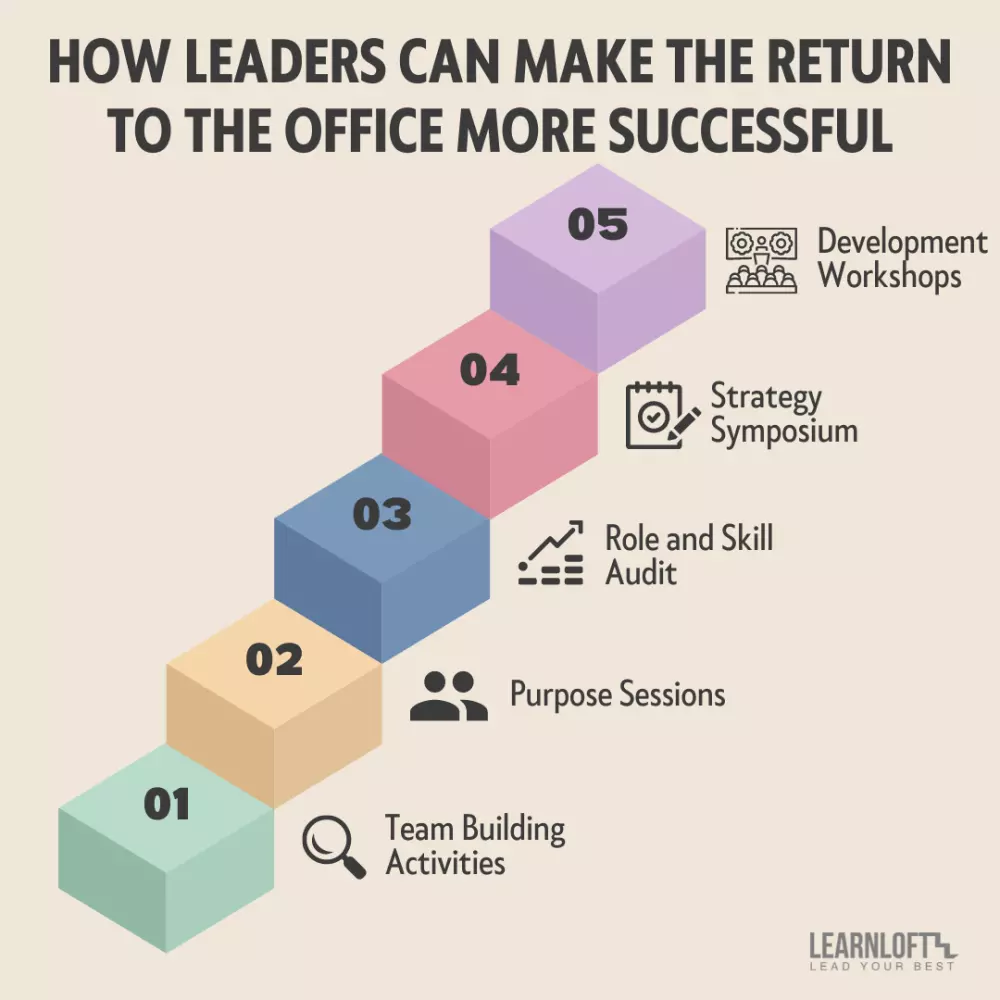Comments
- No comments found

For many people, March and April are the beginning of the end of remote work.
Whether you love remote work or hate it, most people have been amazed at the performance and productivity of employees. Several studies over the past few months show productivity while working remotely from home is better than working in an office setting. On average, those who work from home spend 10 minutes less a day being unproductive, work one more day a week, and are 47% more productive.
If productivity wasn't enough, saving hours a day from a commute and having more time for exercise and family are enormous benefits. But after two years of working from home, the return to the office is now upon you. Companies of all sizes and industries have communicated their return to the office policy.
Take Google as an example. They announced a mandatory three-day-a-week return to the office for most employees. In an interview with the Wall Street Journal, CEO Sundar Pichai said, "A set of our workforce will be fully remote, but most of our workforce will be coming in three days a week. But I think we can be more purposeful about the time they're in, making sure group meetings or collaboration, creative collaborative brainstorming, or community building, happens then. I'm excited. I think people and teams are going to figure this out, but overall I feel energized that we get to rethink for the next 10 years."
While I am sure not all of Google's employees are thrilled with the decision, Pichai demonstrated outstanding leadership and thoughtfulness in his approach by looking beyond just having employees back physically in an office.
I was a guest of Tyler Dickerhoof on a recent episode of The Impact Driven Leader Podcast, and I said this about the return to the office, "In many ways, a return to the office is a great thing. However, if we are going to go back into the office to work exactly like we are working at home, that is a terrible policy."
Don't just bring people back to the office to do the same work they are doing at home.
See, most companies and leaders have been so focused on defining their return to the office policy they have forgotten the most essential part: "What team members are going to do differently while they're there." So you might as well take this moment to answer the question for yourself:
"What are team members going to do differently while they are in the office versus working remotely?"
Having interviewed and coached hundreds of professionals in the last year, the overwhelming priority employees mention in a job search is "flexible and remote work options." The scary part is they say this before their salary or compensation desires. The organizations and leaders who embrace this demand will win the talent war.
Leaders whose return to the office policy is anchored in trust and focuses on work beyond a screen will be most successful.
If you are interested in going beyond the screen and making sure the time you are in the office with your colleagues is more purposeful, make sure these are on the agenda:

Zoom, Microsoft Teams, Slack, and email are great ways to communicate and get work done collaboratively. What these tools often lack is mechanisms to build stronger relationships and more cohesive teams. However, being back together in person allows teams to be authentic and vulnerable with each other.
Being in person allows teams to be authentic and vulnerable with each other.
But here is the kicker, this doesn't happen by accident. Team building activities could be a planned event like playing pickleball or a tough roundtable question like, "what does each person need to do better to help us be more successful?"
Regardless of the activities that work best for your team, to be authentic and vulnerable requires leaders to craft time and safe spaces for teams to open up, get to know each other, and say what needs to be said.
I wrote in Building the Best "people persevere because of purpose, not pay." Fully remote work makes it hard to engrain a more profound purpose like mission, vision, and core values into a team.
People persevere because of purpose, not pay.
Now is the time to double and triple down on the core values of your team or organization and highlight precisely what it means to live them out daily.
The majority of organizations have performance evaluations yearly. Now is the time to Conduct "Role and Skill Audits." Role and skill audits have three essential parts:
Ask team members, "Are you in the right role?" or "Are there any other roles or skills you want to explore?"
Ask managers, "What team members aren't in the right role" or "What skill gaps do you have on the team?"
Shift employees to better align with their interests and gaps that exist
Strategic alignment is one of the essential things any organization or team can achieve. However, doing it well online is difficult. Block three days to solely focus on strategy, competition, and the current market. This will be time well spent because most people like to work in the business versus on the business.
There has never been a time to schedule a strategy symposium. Here is the kicker: whether you plan to return to the office or not, don't wait another month without blocking an offsite strategy symposium.
As someone who has taught hundreds of virtual leadership development workshops through the pandemic, I have learned a few things. First, virtual workshops are more cost-effective and easier to host attend. Second, they are tougher to develop meaningful skills.
If that wasn't enough, it's challenging for managers to keep a finger on the pulse of their team's skill development with a fully remote workforce. So, unfortunately, most managers default to looking solely at short-term results instead of coaching long-term skills.
Most managers default to looking solely at short-term results instead of coaching long-term skills.
The point is, if you are going to bring people back together in person, focus on meaningful skill-building and development.
A few additional ideas include:
Mentoring Meetings
Innovation Conference
Employee Ted Talks About Lessons Learned From the Pandemic
Whether April is the beginning of the end of remote work for you or not, the reality is every team should be focusing on being more purposeful with the time team members are together in person.
The stakes are high, and getting the return to the office right could make or break the future of your company. So focus more on what people will be doing together versus how many days they will be doing it.
John is the CEO of LearnLoft, author of, F.M.L. Standing Out & Being a Leader and host of the 'Follow My Lead' Podcast. He writes or has been featured on Inc.com, LinkedIn Pulse, TrainingIndustry.com, eLearningIndustry.com, CNBC Money, and more. John completed his education at the University of Maryland College.
Leave your comments
Post comment as a guest